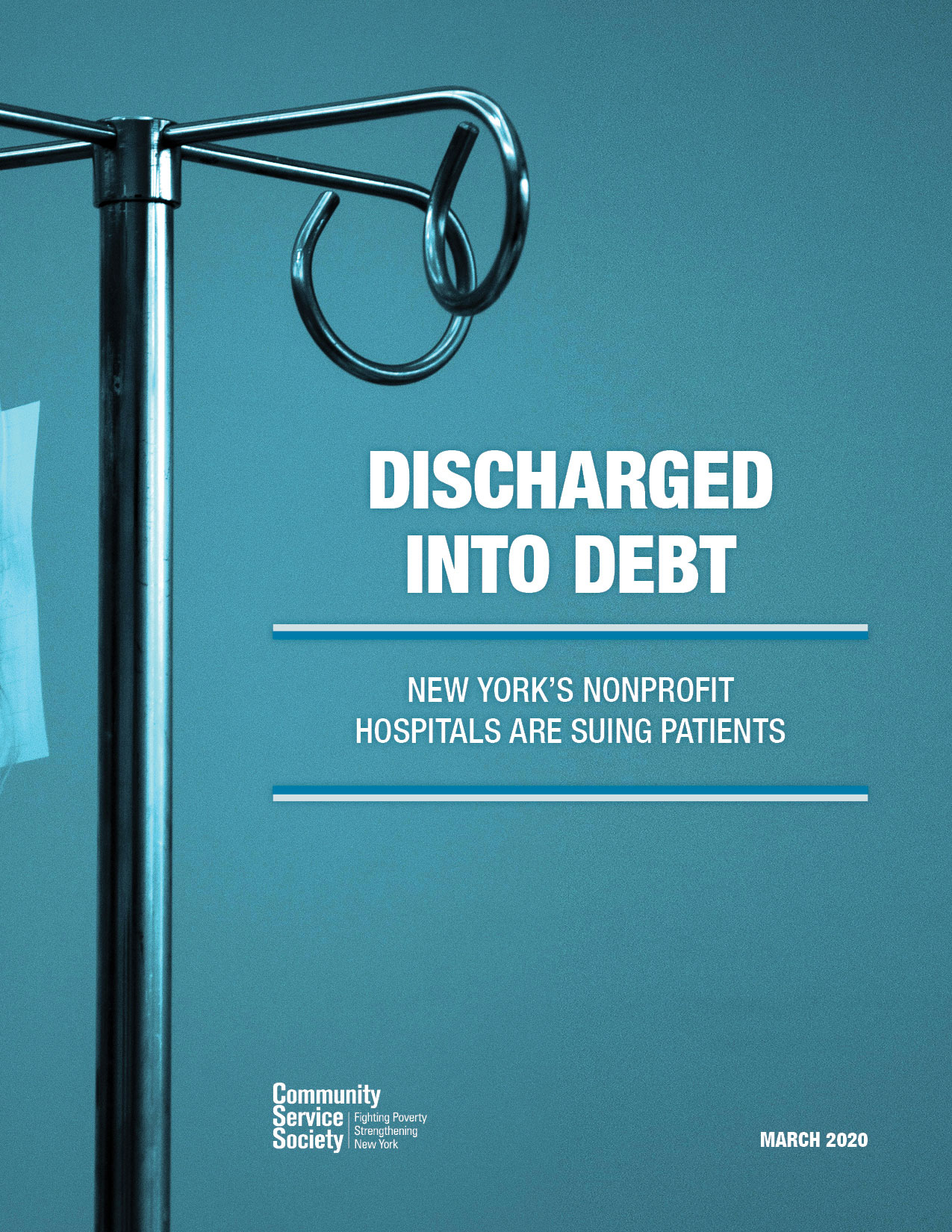Mapping How New York’s Hospitals Sue Vulnerable Patients
Amanda DunkerElisabeth Ryden Benjamin
An updated version of this analysis is available here.
New York State’s hospitals are all nonprofit charities – but that hasn’t stopped some of them from suing financially-strapped patients for small outstanding medical balances. In March, we analyzed hospitals in 26 out of 62 New York counties, and we uncovered more than 30,000 such lawsuits against patients in the last five years. Since then we’ve completed the search for all of New York’s hospitals – the final tally is over 40,000 lawsuits. Use our mapping resource below to find out how your local hospital stacks up.
Our March 2020 report Discharged Into Debt takes a closer look at these alarming lawsuits against patients and finds some disturbing trends. New York’s hospitals receive billions of dollars in state support each year, including over $1 billion to help them pay for services to low- and moderate-income New Yorkers who are uninsured. Yet we found that the hospitals who sue the most patients provide insufficient financial assistance and rely on professional debt collection law firms to go up against patients who are largely unrepresented.
New York’s hospitals are on the front lines of a global pandemic. The doctors, nurses, and other front-line staff are risking their own lives to help patients. But it’s hard not to wonder what will happen to those patients financially after the dust settles. The state has taken steps to protect patients from surprise bills and to waive co-pays related to COVID-19 testing and treatment – but the state cannot regulate all insurance products (for example, many of the plans used by large employers) and some providers are still turning to patients for payments they do not owe. Federal legislation prohibit all providers that have received relief funding from balance billing patients – but it’s still happening. It’s a tragedy that people have to worry about whether or not they can afford medical care even during a pandemic. And it’s a tragedy when people who cannot afford care end up in court when they could not avoid needing medical help.
Some hospitals say they have to sue patients to stay financially solvent. If that is true, New York has to take action now to find a more sustainable solution for keeping hospitals open. It could start by being a more careful steward of hospital funding. Not all of New York’s hospitals are in financial distress. Over the past 20 years, New York has failed to prioritize support for the safety-net hospitals that take care of all New Yorkers. Instead, the state provides support for all hospitals regardless of their financial surpluses or the population they care for.
Many of the hospitals that are financially distressed never sue their patients, because they know that suing the people they are supposed to take care of is not a good way to keep their hospital running. New York should ensure that these hospitals get the support they need to keep serving all New Yorkers. And all of New York’s hospitals should end the practice of suing patients who cannot afford medical care.
Use the map to take a look at how your local hospital treats patients after discharge. And when we get through this crisis, remember what you saw so you can help New York recover without debt litigation against patients.
According to the latest data, hospitals in Fulton County and Steuben County have sued the greatest number of patients over the past five years, while Northwell’s “clinical affiliate” Crouse Health hospital in Syracuse County has pursued the single greatest number of lawsuits in the state. Crouse has sued 5,546 patients since 2015, even with an excess of $4,731,128 in Indigent Care Pool funds. Map updated December 2021.
This map was supported and co-created by BetaNYC through the use of BetaNYC's RADAR system.
Data on civil court cases was retrieved from eCourts, a resource created by the New York State Unified Court System. Data on indigent care pool funding was provided by the New York State Department of Health. Data on the amount hospitals spent on financial assistance was retrieved from the hospitals’ Institutional Cost Reports, filed annually with the New York State Department of Health. The windfall amounts reported on the map are the difference between what the hospital received from the state’s indigent care pool and the amount they reported spending on financial assistance for uninsured patients. For more information about the methodology, see our report Discharged Into Debt.
On November 13, 2020, CSS VP of Health Initiatives Elisabeth Benjamin joined The Capitol Pressroom with David Lombardo to discuss how the COVID-19 pandemic has exacerbated the medical debt crisis.
